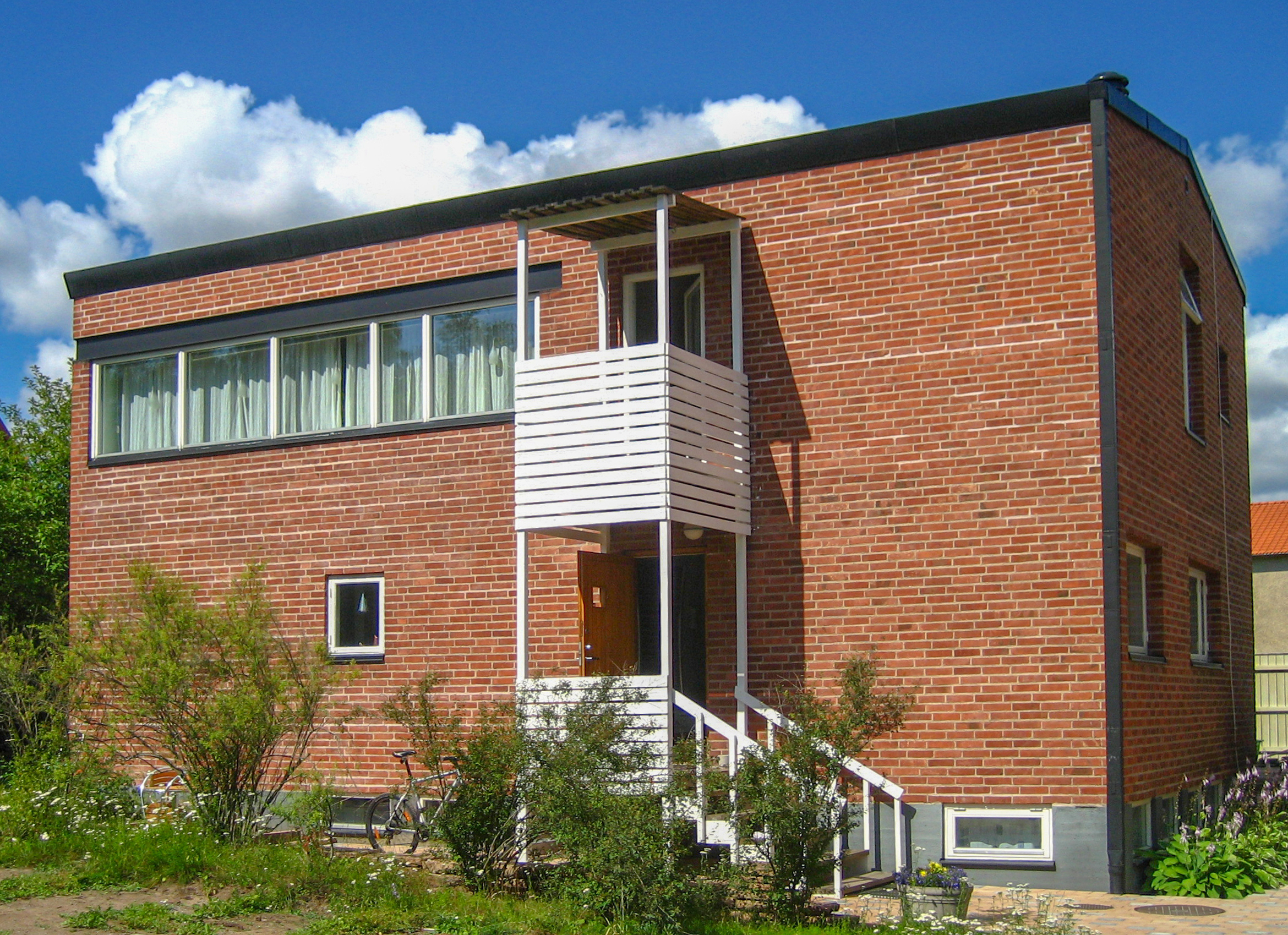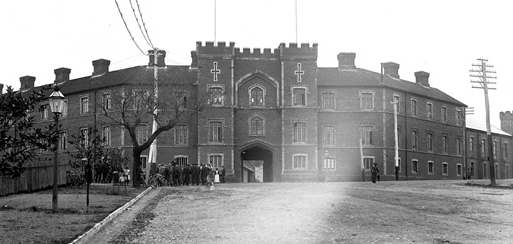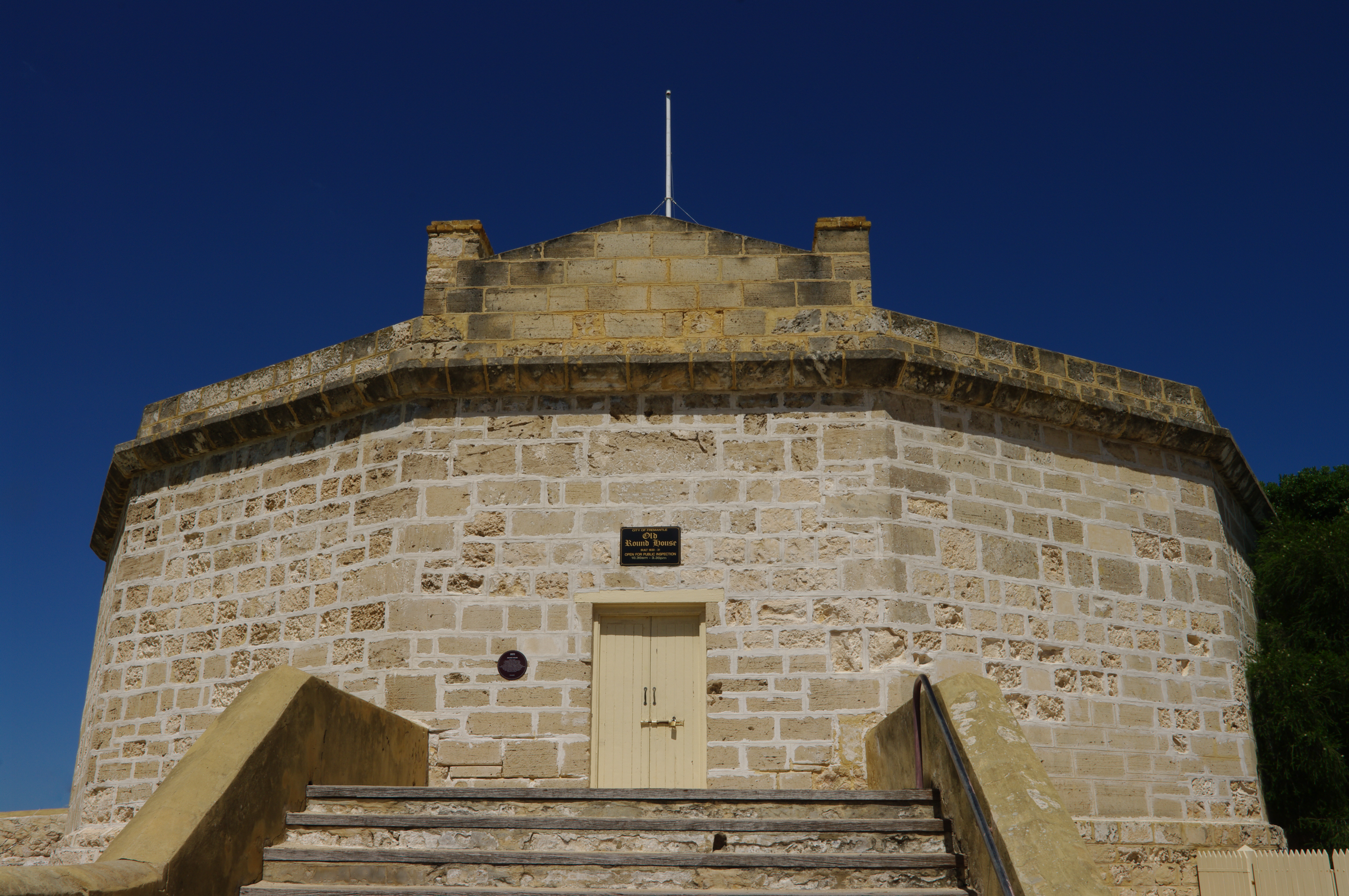|
Don Aitken Centre
The Don Aitken Centre, also known as the Main Roads Western Australia Building, is a 10-storey office building in East Perth, Western Australia. It has been the main office of Main Roads Western Australia since it opened in 1970. History Western Australia's economy boomed in the decades following World War II as the state rapidly increased its gold and iron ore production. This resulted in the development of freeways and other roads in Perth, expanding the responsibility of the Main Roads Department. Many colonial and gold rush era buildings in Perth were being demolished as well, to be replaced with modernist buildings. This included the Colonial Barracks, were the Main Roads Department was based. In 1967, it was decided that the Main Roads Department would need its own building. A site was chosen in East Perth at the end of Wellington Street. On the site was a brick house, shed, and changing rooms which were demolished, and a sports playing field which was levelled. In ear ... [...More Info...] [...Related Items...] OR: [Wikipedia] [Google] [Baidu] |
Brutalist Architecture
Brutalist architecture is an architectural style that emerged during the 1950s in the United Kingdom, among the reconstruction projects of the post-war era. Brutalist buildings are characterised by minimalist constructions that showcase the bare building materials and structural elements over decorative design. The style commonly makes use of exposed, unpainted concrete or brick, angular geometric shapes and a predominantly monochrome colour palette; other materials, such as steel, timber, and glass, are also featured. Descending from the modernist movement, Brutalism is said to be a reaction against the nostalgia of architecture in the 1940s. Derived from the Swedish phrase ''nybrutalism,'' the term "New Brutalism" was first used by British architects Alison and Peter Smithson for their pioneering approach to design. The style was further popularised in a 1955 essay by architectural critic Reyner Banham, who also associated the movement with the French phrases '' béton bru ... [...More Info...] [...Related Items...] OR: [Wikipedia] [Google] [Baidu] |
East Perth, Western Australia
East Perth is an inner suburb of Perth, Western Australia, located next to the Perth central business district. Claise Brook and Claisebrook Cove are within the suburb. Formerly characterised by industrial land uses and urban blight, the redevelopment of East Perth was, and remains, the largest inner-city urban renewal project in the state. The design of the new residential neighbourhoods was strongly influenced by the new urbanism movement. Land use Primarily an industrial area in the early twentieth century, it was the location of the East Perth Gas Works, East Perth Power Station (which was decommissioned and the building is being renovated for other purposes), the East Perth railway yard, and engine sheds. From the early 1980s, virtually all of the residential real estate on the western side of Lord Street became home to commercial enterprises; the buildings remain, either single or duplex dwellings previously inhabited mostly by migrant families. Population In the 2016 ... [...More Info...] [...Related Items...] OR: [Wikipedia] [Google] [Baidu] |
Main Roads Western Australia
Main Roads Western Australia (formerly the Main Roads Department) is a statutory authority of the Government of Western Australia that is responsible for implementing the state's policies on road access and main roads. It operates under the ''Main Roads Act 1930'' (WA). As at June 2021, it manages of roads, representing the arterial road network in Western Australia. Each of the roads must be declared a "public highway" or "main road" in the ''Western Australian Government Gazette'' and is allocated a highway or main road number – many roads perceived as main roads by the public are in fact managed by local councils. Main Roads Western Australia also regulates heavy vehicles through the issue of permits and notices under the authority granted to the Commissioner of Main Roads under the Road Traffic Act 1974. The Road Transport Compliance Section, a section within the Department, employs Transport Inspectors who, alongside police officers, monitor heavy vehicle movement and ... [...More Info...] [...Related Items...] OR: [Wikipedia] [Google] [Baidu] |
Barracks Arch
The Barracks Arch is located on the corner of Malcolm and Elder Streets, at the western end of St Georges Terrace in Perth, Western Australia. The Barracks Designed by Richard Roach Jewell, the Barracks were originally built from 1863 to 1866Information plaque on the Arch, 13 November 2016 to house the Enrolled Pensioner Force. The Enrolled Pensioner Force came to Australia as guards on convict ships, and were given small land grants in return for part-time guard work. The bulk of convict work moved from Fremantle to Perth in the 1860s, so there was a need to accommodate many Enrolled Pensioners and their families. Architect Jewell designed the three-storey building in Tudor style that resembled a medieval castle. The building was brick, rather than more expensive stone, and horizontal lines emphasised by using lines of paler colour bricks underneath the windows. The roof was made of timber shingles. The building was finished in 1866, and was later extended to house an addit ... [...More Info...] [...Related Items...] OR: [Wikipedia] [Google] [Baidu] |
Wellington Street, Perth
Wellington Street is the northernmost of the four primary east-west streets in the central business district of Perth, Western Australia. It is long, stretching from Plain Street in East Perth to Thomas Street in West Perth. Route description Wellington Street begins at Plain Street in East Perth, as the continuation of Waterloo Crescent. It travels in an east-north-easterly direction, passing the Wellington Square park. In the suburb of Perth, Wellington Street is adjacent to a number of notable buildings and landmarks, including Royal Perth Hospital, Forrest Chase shopping centre, Perth railway station, Yagan Square, Perth Busport, and Perth Arena, before reaching the Mitchell Freeway. The road passes under the freeway with a half-diamond interchange that has a southbound freeway exit ramp and a northbound entrance ramp. Wellington Street continues into West Perth, past the Watertown shopping centre and other commercial properties, until it ends at an intersection with Th ... [...More Info...] [...Related Items...] OR: [Wikipedia] [Google] [Baidu] |
Premier Of Western Australia
The premier of Western Australia is the head of government of the state of Western Australia. The role of premier at a state level is similar to the role of the prime minister of Australia at a federal level. The premier leads the executive branch of the Government of Western Australia and is accountable to the Parliament of Western Australia. The premier is appointed by the governor of Western Australia. By convention, the governor appoints as premier whoever has the support of the majority of the Western Australian Legislative Assembly. In practice, this means that the premier is the leader of the political party or group of parties with a majority of seats in the Legislative Assembly (lower house). Since Western Australia achieved self-governance in 1890, there have been 31 premiers. Mark McGowan is the current premier, having been appointed to the position on 17 March 2017. History The position of premier is not mentioned in the constitution of Western Australia. From 1890 ... [...More Info...] [...Related Items...] OR: [Wikipedia] [Google] [Baidu] |
David Brand
Sir David Brand KCMG (1 August 1912 – 15 April 1979) was an Australian politician. A member of the Liberal Party, he was a Member of the Legislative Assembly of Western Australia from 1945 to 1975, and also the 19th and longest-serving Premier of Western Australia, serving four terms from the 1959 to the 1971 election. He resigned as leader of the Liberal Party in 1973, and retired from politics in 1975, dying from heart disease in 1979. Early life Brand was born in Dongara, Western Australia, the eldest of four children of Albert John Brand, a farmer, and his wife Hilda, née Mitchell. His maternal grandfather was Samuel Mitchell, a Cornish immigrant who was a pioneer of the mining industry in Western Australia and served in both houses of state parliament.Samu ... [...More Info...] [...Related Items...] OR: [Wikipedia] [Google] [Baidu] |
State Register Of Heritage Places
The State Register of Heritage Places is the heritage register of historic sites in Western Australia deemed significant at the state level by the Heritage Council of Western Australia. History In the 1970s, following its establishment of the National Trust of Western Australia, the National Trust created a set of classified properties, and following legislation requiring inventories, Local Government authorities in Western Australia produced a subsequent set of Municipal Inventories, which then resulted in items then being included in the state register. As a result most register records include dates and details from the three different processes. In some cases authorities other than councils had governance over localities such as ''Redevelopment'' authorities, and they also provided Heritage Inventories in that stage of the process. Registration was not always a successful protection. The Mitchells Building on Wellington Street was State heritage listed in 2004 but demoli ... [...More Info...] [...Related Items...] OR: [Wikipedia] [Google] [Baidu] |
Ross Hutchinson
Sir Ross Hutchinson, DFC (10 September 1914 – 19 December 1999) was an Australian rules footballer, coach and politician. He played for and coached East Fremantle, West Perth and South Fremantle in the West Australian National Football League (WANFL) before spending 27 years as a member of the Western Australian Legislative Assembly. Early life Hutchinson was born in Worsley in 1914. He was educated at Deanmill before attending Wesley College in Perth from the age of 14. Football career Hutchinson was used in a variety of positions during his football career including centreman, half back and half forward. In his first two seasons he won the Lynn Medal as East Fremantle's fairest and best player. He captain-coached the club to a premiership in 1937, as a half back flanker. The following two seasons ended in grand final losses, both to Claremont. In 1939 he was captain-coach of the Western Australian interstate football team which took on Victoria. Hutchinson sought a ... [...More Info...] [...Related Items...] OR: [Wikipedia] [Google] [Baidu] |
List Of State Register Of Heritage Places In The City Of Perth
The State Register of Heritage Places is maintained by the Heritage Council of Western Australia. , 1,032 places are heritage-listed in the City of Perth,This search yields 1,231 results of which 1,032 are for the City of Perth, 183 are for the City of South Perth, ten are for the City of Vincent The City of Vincent is a local government area of Western Australia. It covers an area of approximately in metropolitan Perth, the capital of Western Australia, and lies about 3 km from the Perth CBD. The City of Vincent maintains 139&nbs ..., three are for the City of Melville, two are for the Town of Victoria Park and one is for the City of Belmont. of which 226 are on the State Register of Heritage Places.This search yields 246 results of which 226 are for the City of Perth, 18 are for the City of South Perth and two are for the City of Melville, these two being the Canning Bridge east- and westbound which connects the two latter cities. List The Western Australian ... [...More Info...] [...Related Items...] OR: [Wikipedia] [Google] [Baidu] |
Brutalist Architecture In Australia
Brutalist architecture is an architectural style that emerged during the 1950s in the United Kingdom, among the reconstruction projects of the post-war era. Brutalist buildings are characterised by minimalist constructions that showcase the bare building materials and structural elements over decorative design. The style commonly makes use of exposed, unpainted concrete or brick, angular geometric shapes and a predominantly monochrome colour palette; other materials, such as steel, timber, and glass, are also featured. Descending from the modernist movement, Brutalism is said to be a reaction against the nostalgia of architecture in the 1940s. Derived from the Swedish phrase ''nybrutalism,'' the term "New Brutalism" was first used by British architects Alison and Peter Smithson for their pioneering approach to design. The style was further popularised in a 1955 essay by architectural critic Reyner Banham, who also associated the movement with the French phrases '' béton brut' ... [...More Info...] [...Related Items...] OR: [Wikipedia] [Google] [Baidu] |





